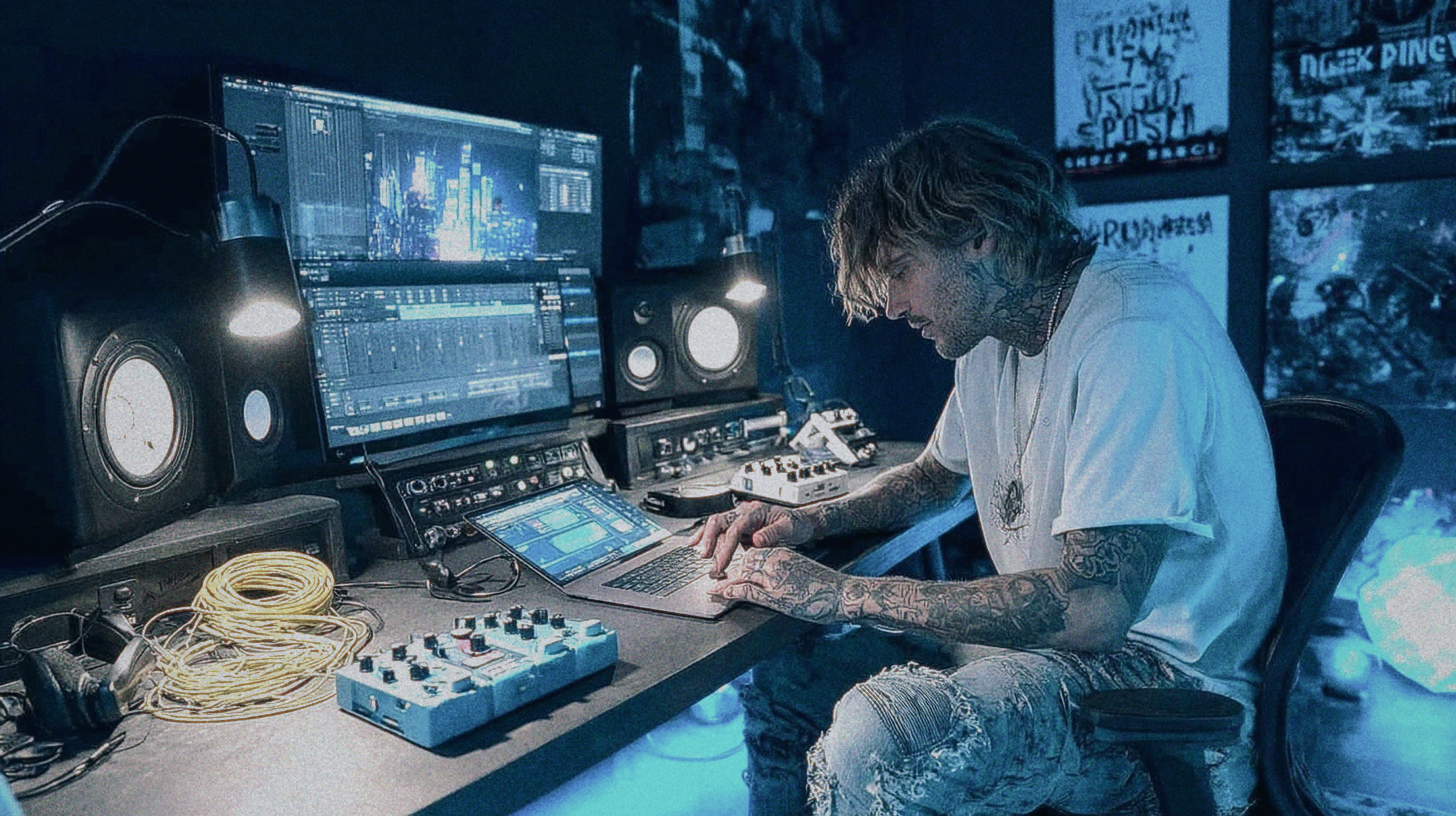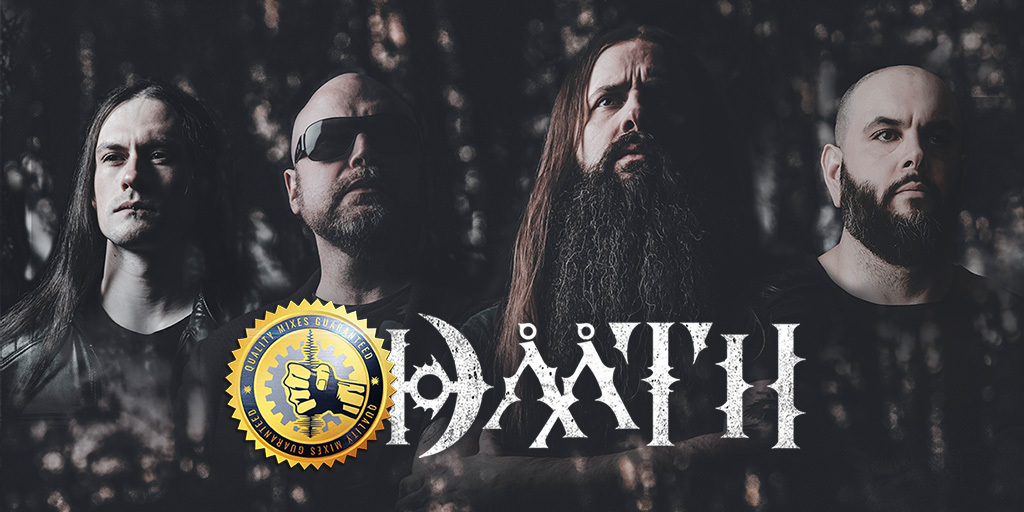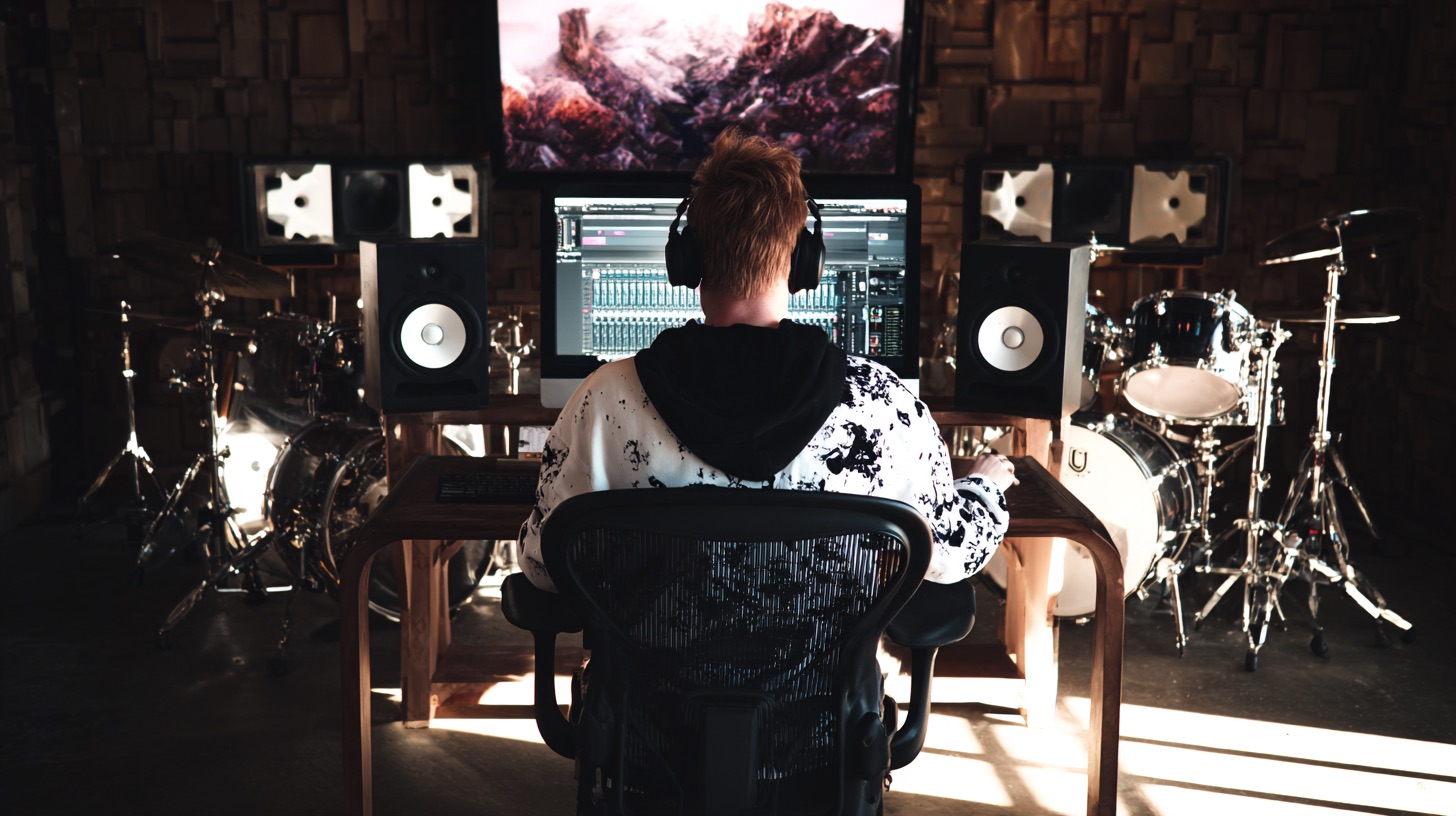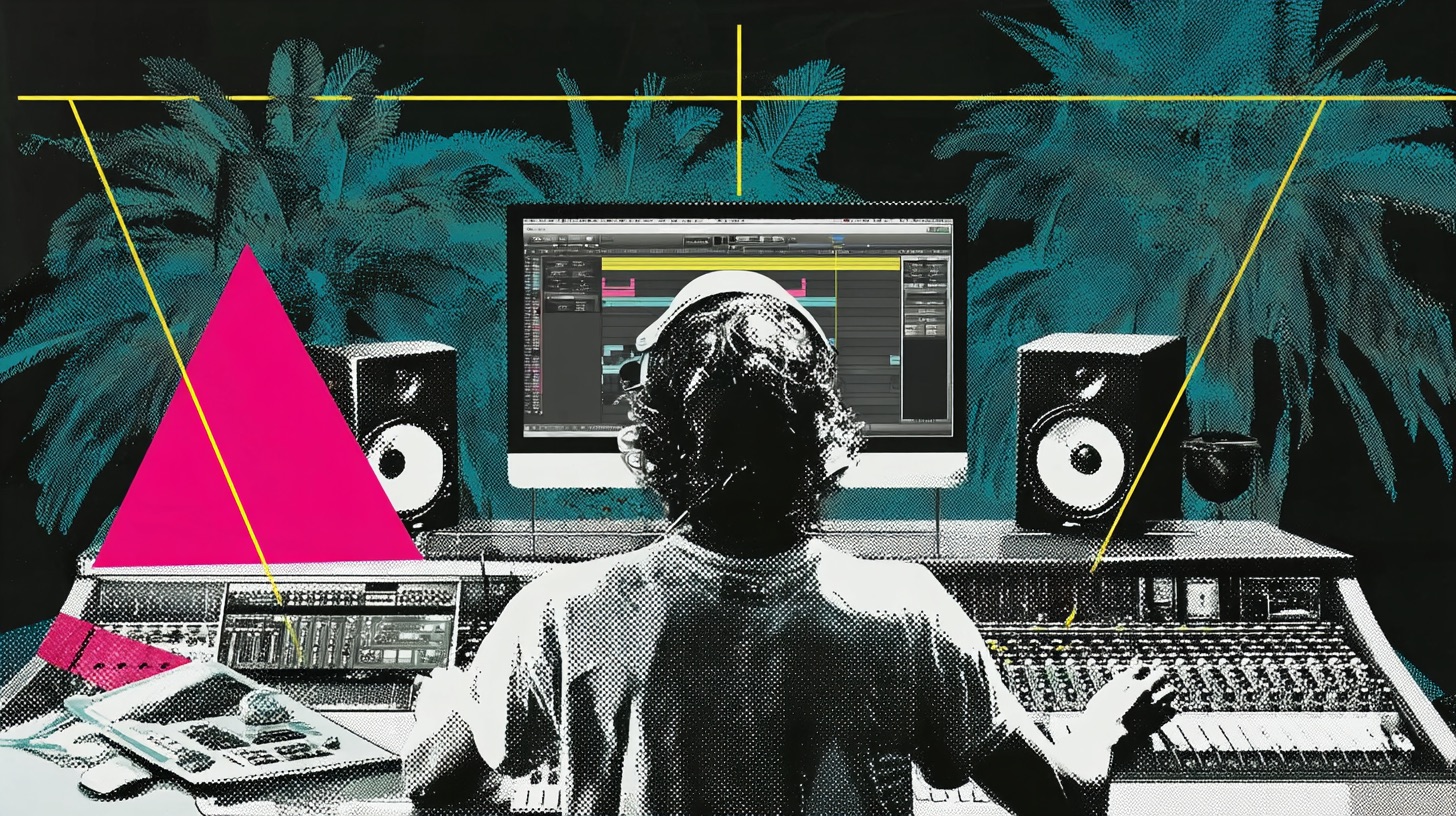
How To Start Mixing Music That Sounds Pro (In Your Bedroom)
Nail The Mix Staff
Staring at a fresh DAW session can be intimidating. You’ve tracked killer riffs, the drum performance is tight, and the vocals are ripping. But it all sounds… like a demo. Getting from that raw, chaotic energy to a polished, professional-sounding metal mix feels like a dark art.
But here’s the thing: it’s never been a better time to be a metal musician or producer. The old gatekeepers are gone. You don't need to save up a five-figure budget to book a massive studio with a producer who doesn't even like blast beats.
Thanks to insane advances in technology and access to education, you have everything you need to start mixing music that can compete with the pros, right from your own space. The creative control is entirely in your hands. You just need to know how to use it.
The New Reality: Why You MUST Learn to Mix Your Own Music
In the past, getting a good recording was a geographic lottery. You were at the mercy of the local studio engineer, who probably spent most of his time recording folk singers and had no idea what to do with a downtuned 8-string. The result? Countless bands blew their savings on demos that sounded thin, weak, and nothing like the vision in their heads.
That era is over.
The power has shifted directly to the creator. You don’t need anyone’s permission to make a world-class record anymore. Artists like Buster Odeholm (Humanity's Last Breath, Vildhjarta) and Devin Townsend have built entire careers on this principle of self-sufficiency, producing and mixing their own groundbreaking music from their own studios.
When you learn to mix, you’re not just learning a technical skill; you’re taking full ownership of your artistic vision. You can translate the sound in your head directly to the speakers, without a middleman.
Your Bedroom is the New SSL Room: The Gear You Actually Need
Forget the images of wall-sized consoles and racks overflowing with glowing gear. The barrier to entry for professional-quality recording and mixing is lower than it has ever been.
The Interface is King
The days of cheap, noisy, and thin-sounding home studio interfaces are long gone. Modern, affordable interfaces are incredibly good. A unit like a Focusrite Scarlett 2i2 or a PreSonus Studio 24c provides crystal-clear conversion that is more than capable of capturing pro-level sound. You don't need to spend thousands to get a clean, high-quality signal into your computer.
The Power in the Box: DAWs and Plugins
Your Digital Audio Workstation (DAW) is your command center. Whether you're using Reaper, Pro Tools, Logic Pro X, or Cubase, the core capabilities are largely the same. The real magic happens with the tools you use inside it. A few key plugins can do the heavy lifting for 90% of your mix.
Don't Sleep on Monitoring
You can't mix what you can't hear. This is the one area where you shouldn't cut corners. A solid pair of monitoring headphones like the Beyerdynamic DT 770 Pro or Audio-Technica ATH-M50x is essential for checking details. If you have a treated room, entry-level studio monitors like the Yamaha HS5s or KRK Rokit 5s will give you a much better sense of the low end and stereo image.
From Good Song to Absolute Banger: Core Metal Mixing Techniques
A great mix takes an already great song and elevates it to a masterpiece. It’s about creating impact, clarity, and power. Here are some of the fundamental techniques common to almost every massive-sounding modern metal mix.
Drums: The Foundation of Modern Metal
The drum sound is the bedrock of your mix. If the drums are weak, the whole song will fall flat.
- The "Natural" Lie: Many musicians say they want an "all-natural" drum sound, but their favorite reference tracks are often heavily sample-replaced or blended. Don't be afraid of samples. Blending a punchy kick sample from a library like the GetGood Drums P V Matt Halpern Pack with your real kick drum can give you the perfect combination of natural feel and concrete-smashing impact. Use a tool like Slate Trigger 2 to make this process seamless.
- Parallel Punch: Want drums that hit you in the chest without sounding squashed? Use parallel compression. Send all your drum shells to an auxiliary bus. On that bus, use an aggressive compressor to absolutely smash the signal—think a digital emulation of a Distressor like the Empirical Labs Arousor or even a stock 1176-style plugin with a fast attack and fast release. Then, blend that crushed signal back in underneath your main drum bus. You get all the punch and aggression, while the main bus retains its dynamics.
Guitars: Carving Out the Aggression
Distorted guitars can easily turn into a wall of mud. The key is to carve out a specific place for them in the mix.
- HPF and LPF are Your Best Friends: The first move on any heavy guitar track should be a high-pass filter (HPF) and a low-pass filter (LPF). Roll off the low-end rumble below 80-120Hz to make room for the kick and bass. Then, roll off the harsh, fizzy top end above 8-12kHz. This single move cleans up the tone immensely.
- Surgical EQ for Fizz and Mud: That nasty, scratchy fizz often lives in the 4-7kHz range. Use a parametric EQ like the FabFilter Pro-Q 3 with a narrow Q (bandwidth) to find the most offensive frequency and pull it down. Do the same for any boxy or muddy frequencies in the 250-500Hz range. This is less about broad strokes and more about precision surgery. Learn the ins and outs with these essential EQ strategies for mixing modern metal.
- The Amp Sim Revolution: The Kemper Profiling Amp changed the game for capturing and recreating amp tones. Now, that power is available in plugin form. Amp sims from companies like Neural DSP (especially their Archetype series) give you access to world-class tones without ever needing to mic a cabinet.
Bass: The Unsung Hero
A killer metal bass tone is often two tones in one: a clean, powerful low end and an aggressive, distorted midrange.
The easiest way to achieve this is with multi-band processing. Split your bass DI signal into two tracks. On the first track, use a low-pass filter to keep only the frequencies below ~200Hz. Keep this track clean and compress it for a solid, consistent foundation. On the second track, use a high-pass filter at the same frequency. This is your "grit" track. Distort it with a plugin like the Darkglass Ultra or a SansAmp emulation to get that aggressive grind and clank that helps the bass cut through the wall of guitars. Blend the two tracks to taste.
The Final 10%: The Polish That Makes It Pro
Once your individual elements sound good, it’s time to make them sound good together.
This is where bus processing comes in. Sending all your rhythm guitars to a single "Guitar Bus" and adding a touch of EQ and compression can help "glue" them together, making four separate tracks feel like one massive performance.
The same goes for your mix bus. A touch of subtle compression from a plugin emulating the SSL G-Series Bus Compressor can add that final bit of punch and cohesion that separates an amateur mix from a pro one. Automation is also key—don't just set your levels and forget them. Automate vocal EQs, guitar volumes in solos, and reverb sends to create a dynamic journey for the listener.
It's Time to Get Your Hands Dirty
The tools are affordable, the knowledge is accessible, and the only thing holding you back is your willingness to put in the work and learn. You can create mixes that stand up to your favorite records, all from the same chair you're sitting in now.
Reading about these techniques is one thing. But watching a pro producer actually apply them in a real session, explaining every move—every EQ boost, every compressor setting, every automation trick—is a total game-changer.
At Nail The Mix, we put you in the room with the producers behind bands like Gojira, Lamb of God, and Periphery. You get the original multitracks from a massive metal song and watch the original producer mix it from scratch, live. If you're ready to stop guessing and start mixing with confidence, this is your next step.
See how the pros build their massive mixes and Unlock Your Sound with Nail The Mix.
Get a new set of multi-tracks every month from a world-class artist, a livestream with the producer who mixed it, 100+ tutorials, our exclusive plugins and more
Get Started for $1






